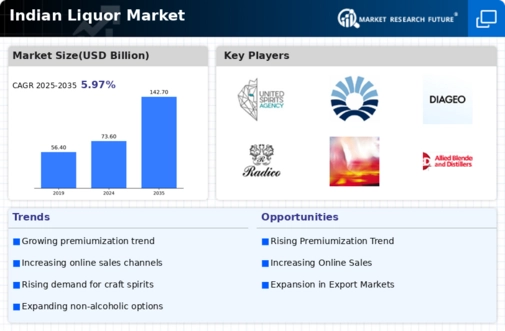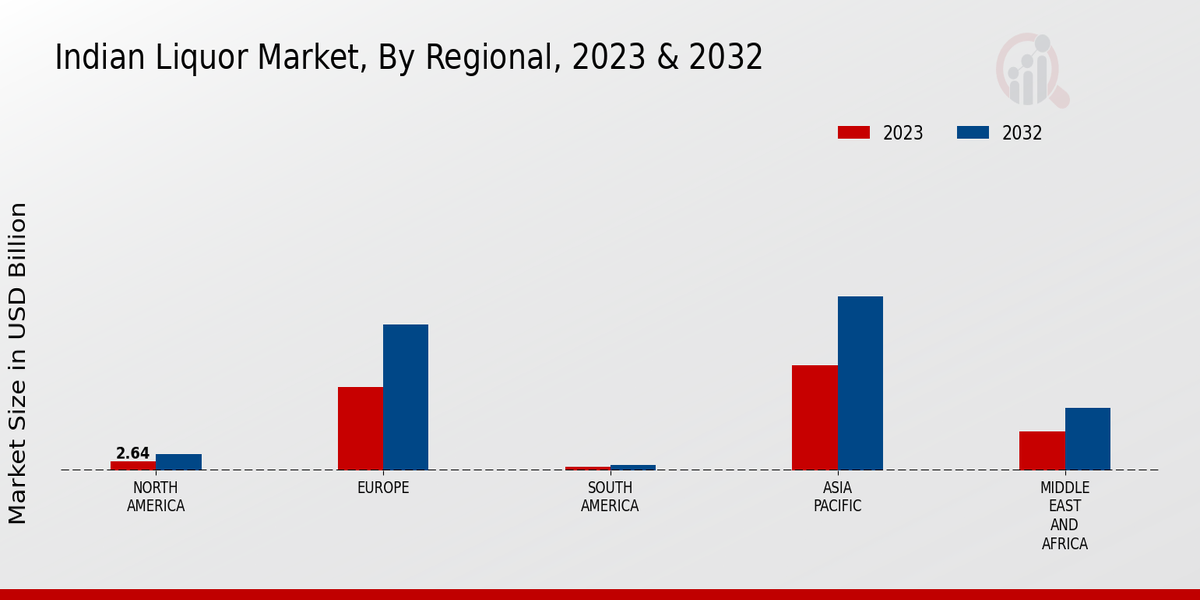Increased Tourism
Tourism plays a crucial role in the Indian Liquor Market, as the influx of international visitors often leads to higher consumption of alcoholic beverages. With the government promoting tourism through various initiatives, there is a growing demand for local liquor brands among tourists seeking authentic experiences. This trend is particularly evident in regions known for their unique spirits, such as Goa and Rajasthan. Market analysis indicates that the tourism sector's growth could contribute to a 10 percent increase in liquor sales in these areas. Consequently, the Indian Liquor Market stands to benefit significantly from the rising number of tourists.
Regulatory Changes
The Indian Liquor Market is also being shaped by ongoing regulatory changes that aim to modernize the sector. Recent reforms have focused on simplifying licensing processes and reducing taxes on certain liquor categories, which could potentially stimulate market growth. For instance, some states have introduced policies to promote local distilleries, thereby encouraging competition and innovation. These regulatory adjustments may lead to a more favorable business environment, attracting investments and enhancing the overall market landscape. As these changes take effect, they are expected to have a profound impact on the dynamics of the Indian Liquor Market.
Rising Disposable Incomes
The Indian Liquor Market is experiencing a notable shift due to the rising disposable incomes among the middle and upper classes. As economic growth continues, more consumers are willing to spend on premium and luxury liquor brands. This trend is particularly evident in urban areas, where the demand for high-quality spirits is increasing. According to recent data, the premium segment of the liquor market has been growing at a rate of approximately 15 percent annually. This growth is likely to continue as more consumers seek out unique and high-end products, thereby driving the overall expansion of the Indian Liquor Market.
Digital Marketing Strategies
The adoption of digital marketing strategies is transforming the Indian Liquor Market, enabling brands to reach a wider audience. With the increasing penetration of smartphones and internet access, liquor companies are leveraging social media and online platforms to engage consumers. This shift is particularly important for targeting younger demographics who are more likely to respond to digital campaigns. Data suggests that brands utilizing digital marketing have seen a 25 percent increase in customer engagement. As companies continue to innovate their marketing approaches, the Indian Liquor Market is likely to witness enhanced brand loyalty and consumer interaction.
Changing Consumer Preferences
Consumer preferences in the Indian Liquor Market are evolving, with a noticeable shift towards craft and artisanal products. Younger consumers, particularly millennials and Gen Z, are increasingly interested in unique flavors and experiences. This demographic is more inclined to explore local distilleries and craft brands, which has led to a surge in the popularity of craft beers and spirits. Market data suggests that the craft segment is growing at a rate of 20 percent annually, indicating a significant transformation in consumer behavior. This shift is likely to influence the product offerings and marketing strategies of established brands within the Indian Liquor Market.





















Leave a Comment